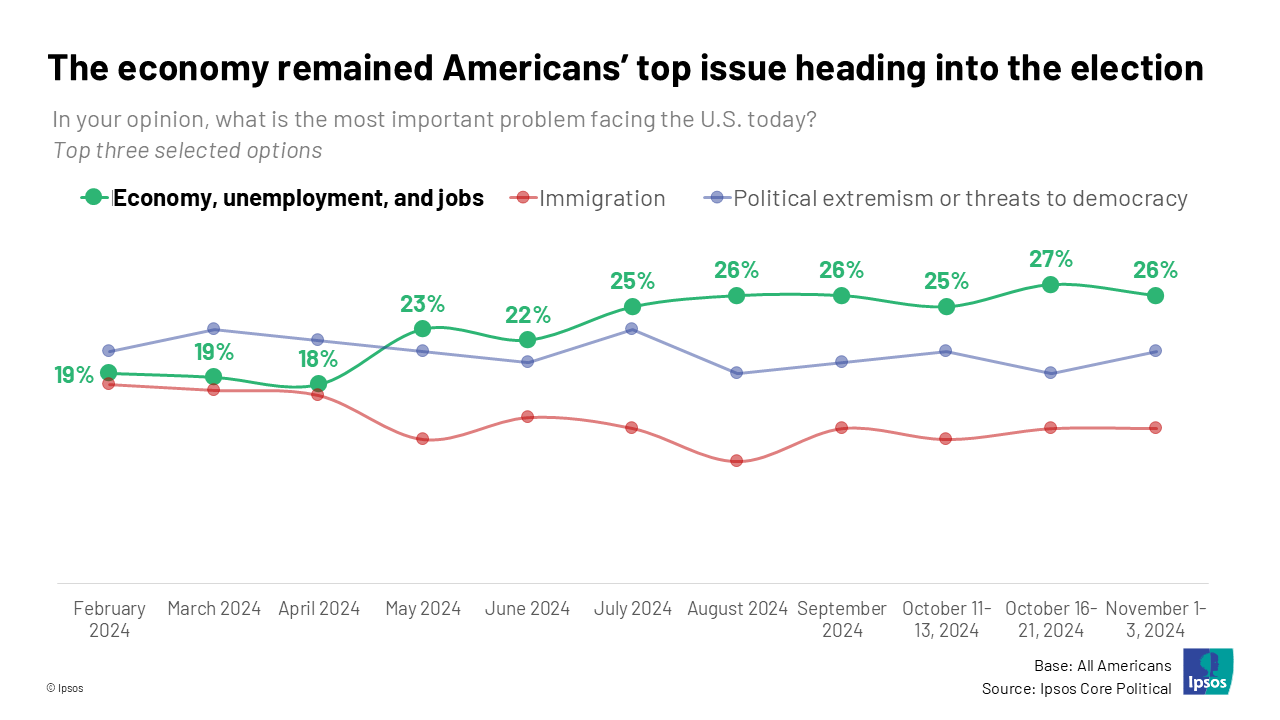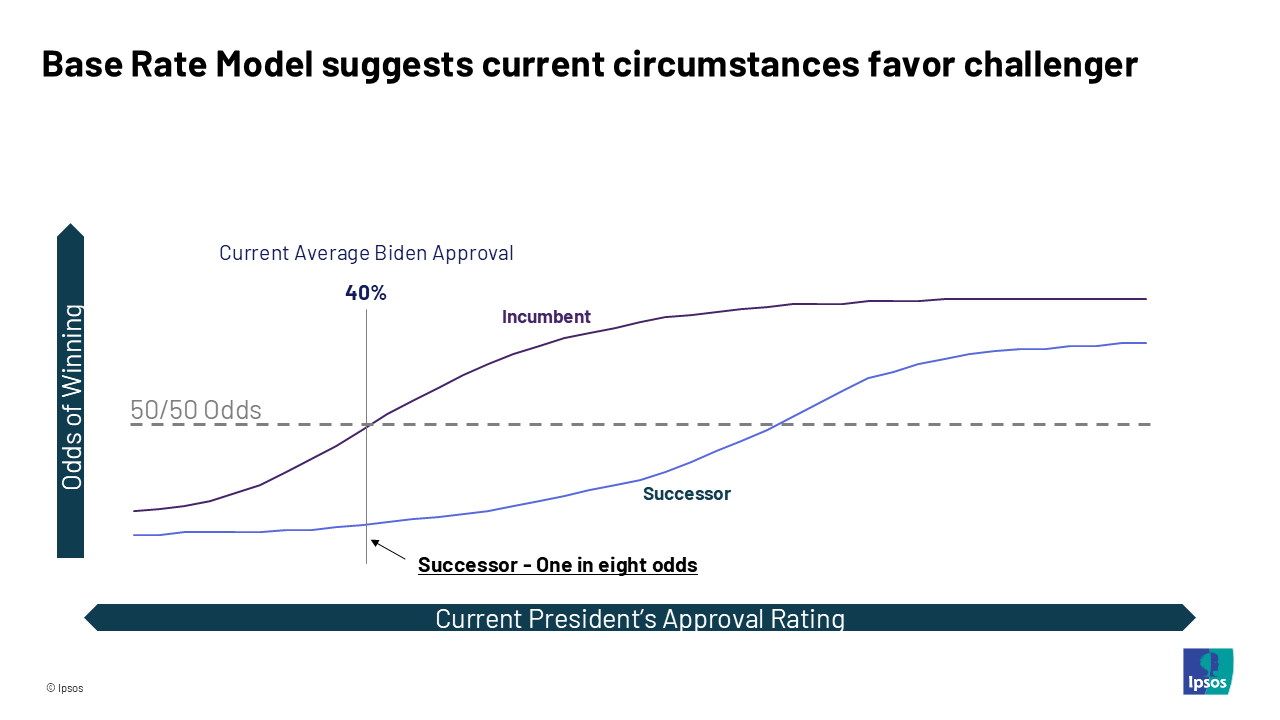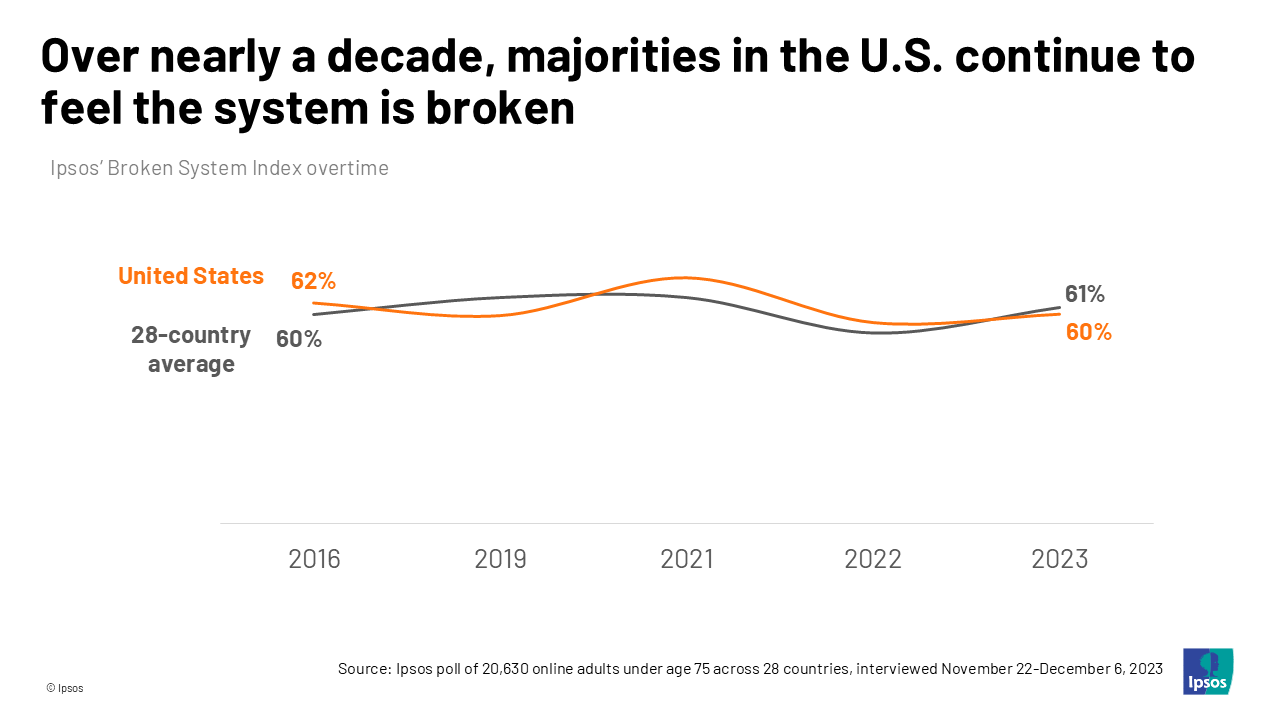Trump's Comeback is Complete
After a years-long campaign, America has finally chosen its next president. Donald Trump will be the country’s 47th president, defeating Vice President Kamala Harris and becoming just the second president to serve non-consecutive terms.
Republicans, as a whole, also had a good night, gaining control of the Senate and retaining control in the House. However, Democrats performed well down ballot in many swing states, and avoided what could have been a catastrophic night.
The estimated national popular vote is within two percentage points, and Trump’s win in some swing states were within a similar margin. The polls showed a tight race, and this largely translated, with the outcome itself being close but decisive.
With the results in, two questions remain. How did we get here? And what does this mean for the future? Here are four key areas to look at:
- The fundamentals won out
- Harris was viewed as a continuation of Biden
- The system continues to be viewed as broken
- Is this a permanent or temporary shift?
The fundamentals won out
Harris had a fundraising advantage, and seemingly a momentum and enthusiasm advantage, after entering the race following Biden’s exit. However, the fundamentals of the election always remained in Trump’s favor.
Throughout 2024, the economy was the number one issue among Americans, and Trump consistently had the advantage, regardless of whether the challenger was Harris or current President Joe Biden. In analysis that Ipsos has done around the world, the candidate that performs best on the main issue wins 85% of the time. Further illustrating this, more Americans felt they were worse off financially under Biden.

Beyond the economy, Trump had other factors that played in his favor, like Biden’s low approval rating. The president’s approval rating is a proxy for how well people feel the current administration is doing, which can be predictive of who might win an election. A low approval rating for the government means they have a harder time winning re-election—especially if they are a successor candidate. President Biden’s numbers were historically low and would have made his own odds of winning the election less than a coin flip. For Harris, her odds as a successor were significantly worse, as she had just a one in eight chance of winning. Additionally, three-fourths of Americans believed the country was on the wrong track.

The year 2024 was the single biggest year for democracy around the world. It also proved to be the year of anti-incumbency. In the 32 democracies that held elections this year, just six incumbent governments gained seats or vote share. The high inflationary period since the pandemic may have contributed to this, with voters potentially choosing to hold those in power accountable.
All of this helps explain why Trump, despite thirty-four felony convictions and a majority of the country having an unfavorable opinion of him, was seen as the favorite and ultimately won the election.
Harris was viewed as a continuation of Biden
Despite not entering the race until mid-July and having less than four months to put together a campaign, Harris seemed to be in a solid position going into the election. She had a higher favorability rating than Trump, a major fundraising advantage, and seemed to have more enthusiasm behind her.
However, one area that likely played a big part in her election night loss is that she was viewed as a continuation of Biden, rather than something new. This was a major problem, because Americans largely blamed Biden for the past four years, particularly higher prices. They wanted him and his administration out, and did not want the next administration to be a repeat.
Two-thirds of Americans believed Harris would mainly continue the policies of the Biden administration, and just one in five wanted that to happen. Additionally, a majority believed she had not done enough to provide details about the policies she would pursue as president.
Americans wanted to change things. Harris was unable to convince the country that the next four years would be different, and that lead to turnout problems. She lost significant ground among Biden’s 2020 base, and that ultimately helped lead to Trump’s victory.
System continues to be viewed as broken
One thing that has remained consistent over the past eight years, regardless of who is in power, is that Americans believe the system is broken. Since 2016, three in five Americans share this sentiment.

While a majority across all political affiliations share this sentiment, Republicans are significantly more likely to believe that things are broken. The party has continued to lean more into anti-establishment and anti-government rhetoric, which can be seen in not only in Trump, but also in those in his upcoming administration, such as Elon Musk.
However, despite agreement that things aren’t working, the country is divided and polarized. In any recent presidential election, the winner is eking out small wins in key states. This is a closely contested country. When Trump takes office on January 20th, it will be the first time the U.S. has had three consecutive one-term presidents since the late 1800s. The incumbent party has lost in back-to-back elections for the first time in more than 40 years.
However, overall, Americans don’t feel like things are working for them and have proven that they will not hesitate to vote for change quickly if they aren’t satisfied with who is in power.
Is this a permanent or temporary shift?
While Trump won the election, and the narrative surrounding Democrats is one of doom and gloom, the question remains: is this is a permanent or temporary shift in the electorate? Right now, the signals are mixed.
On one hand, demographically, Democrats saw sharp declines among voters under 30 and Latino voters. If these changes last, they would make winning future elections significantly harder, as these voters are a key part of the Democratic coalition. However, this shift could also be a one-off, as the economy and immigration were the top issues all cycle, and Trump had the advantage on both.
On the other hand, despite losing at the top of the ticket, Democrats performed well down ballot in the swing states. They won Senate races in Arizona, Michigan, Nevada, and Wisconsin, with the only loss coming in Pennsylvania. Additionally, they also won races for governor, lieutenant governor, and attorney general in North Carolina.
Also, while Republicans won both chambers in Congress, their margin in the House is narrow, and will be even more precarious with some of Trump’s cabinet picks leaving vacant seats.
History has also shown us that, even in the event of blowout victories, things can change quickly. George H.W. Bush won over 400 electoral votes in 1988; Democrats won the next two presidential elections. Conversely, Barack Obama won in decisive fashion in 2008, with Democrats also claiming the House and the Senate. Both chambers flipped just two years later, and although Obama won again in 2012, Trump then won in 2016.
Election night was no doubt a win for Republicans. However, in a time of high polarization and distrust in the system, change seems to be one of the few constants. We will see in due time if this election is an inflection point in American politics, reshaping the parties, or just the continuation of an era that has been defined by change.
Conclusion
While many factors ultimately led to Trump’s victory, his performance on the main issues and the unpopularity of the current administration likely played the biggest roles. Americans largely were unhappy and wanted something new. Although he has already been president, Trump was viewed as the candidate that could bring change.
However, as we enter Trump’s second term, it is also important to remember that this election was close. The country is as polarized as ever, and with the last three presidential elections being decided by razor thin margins, neither party can get complacent. Things can shift quickly, especially when a majority of the country feels like the current system is not working for them. And in this current era of politics, change has often felt inevitable.



